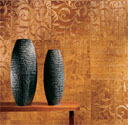 There are many different woods used to make antiques. It can be difficult to tell these woods apart and if the wood has been stained or painted it can be even harder to identify them. Many times lesser value woods will be stained to look like expensive woods. In this article I have provided some information to help you identify the wood used regularly to make antiques.
There are many different woods used to make antiques. It can be difficult to tell these woods apart and if the wood has been stained or painted it can be even harder to identify them. Many times lesser value woods will be stained to look like expensive woods. In this article I have provided some information to help you identify the wood used regularly to make antiques.
Contents
Here is some basic information about wood:
There are two kinds of wood, soft and hard:
- Soft wood is a supple wood
- Hard wood is a dense wood
A good way to tell these two types of wood apart is to press your fingernail into the wood (usually in a hidden place). If the wood is a soft wood your fingernail will leave an indention. If the wood is a hard wood your fingernail will leave no mark.
Wood has two kinds of grain, a close grain and a coarse grain:
- Close grain is where the age rings of the wood are closer together or tight grain. This gives the wood a smooth or fine appearance.
- Coarse grain is where the age rings of the wood are far apart or open grain. This gives the wood grain an uneven appearance.
Many times lighter woods (elm, maple or oak) are stained to look like darker woods such as mahogany or rosewood.
There are some woods that are more valuable than others. This is due to the rarity or availability of the wood. Wood that have to be imported cost much more then wood found native to a country.
Valuable Wood:
- Mahogany
- Rosewood
- Burl Walnut
- Fire side Walnut
- Circassian Walnut
Less Valuable Wood:
- Elm
- Pine
- Oak
- Maple
- Spruce
Types of Wood:
Mahogany is a hard wood that has a close grain. Mahogany is native to South America, North America and the West Indies. Mahogany was popular in England during the mid 18th century. Mahogany was used to make fine furniture during this time period. Red and Brown are two common colors of mahogany.
Oak is a hardwood that has a coarse grain. Oak is native to North America and Europe. In the 17th century Europe started to use oak to make furniture.
Walnut is a hardwood that has a close grain. Walnut is native to North America and Europe. The colors of walnut can vary from a light walnut to a rich golden brown color. There are also special types of walnut including burled (closed scrolling grain), circassian walnut, and American fireside.
Rosewood is a hardwood that has a close grain. Rosewood is native to India, West Indies, and South America. Rosewood got it’s name because of the rose scent the wood gives off when cut. Rosewood can easily be confused with mahogany. When you look closely at rosewood you will see fine black or white rings. Rosewood is also heavier than mahogany.
Pine is a soft wood with a straight grain. It is pale and is knotted. Pine is native to North America and Europe. Pine was frequently used to make furniture that was intended to be painted or veneered.
Maple is a hardwood that has a coarse grain. Maple is native to Europe and North American. Maple was frequently veneered. Another type of maple is bird’s eye maple.
Elm is a hardwood that has a coarse grain. Elm is native to North America and Europe Like maple, elm was frequently veneered.
Veneer:
Veneering is when thin sheets of a more valuable wood are glued to a less valuable wood. This made it so furniture makers could provide more affordable furniture to more customers.  Veneered furniture has a lower value than a piece that is made of solid wood.
Tips for determining if the wood is veneered:
- Look at the edges of the wood and if you see a seam then it is veneered. If the edge is seamless then it is solid wood.
- 17th century veneer was hand cut and may be uneven.
- 19th century veneer was machine cut and are very thin and even.
Inlay, Parquetry, and Marquetry
- Marquetry: This is a technique where various types of wood are applied to the surface to produce a picture. Frequently used shapes where flowers and birds. Many exotic wood such as satinwood, ebony and tulipwood were used for marquetry.
- Parquetry: Parquetry and marquetry are similar. The difference between the two is the subject matter. Parquetry is veneer in geometric patterns. This was commonly used for chess and backgammon boards.
- Inlay is a decorative trimming where materials other than wood is inlaid into wood. Common materials used for inlays:
- Ivory
- Bone
- Mother of Pearl
- Brass
- Tortoise Shell
Gilding:
- Gilding is where gold leaf is applied with a plaster like substance to wood. This was very popular in France.
To find out more about antique furniture and time period that a certain type of wood was used please see Antique furniture styles, the last 200 years
Thank you for great article.
I’m looking for information on wood furniture.
This article helped me a ton.
I already bookmark this page.